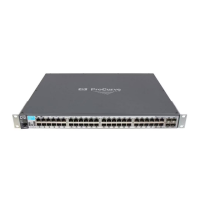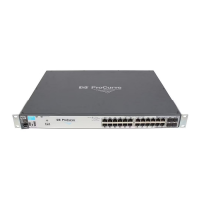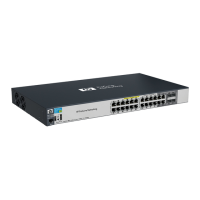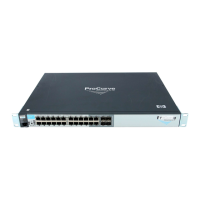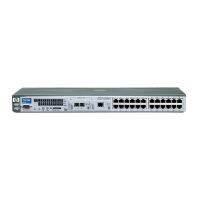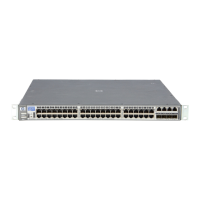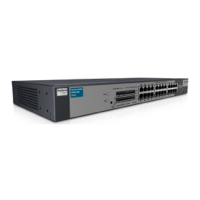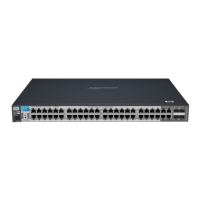Configuring Port-Based and User-Based Access Control (802.1X)
Terminology
Static VLAN: A VLAN that has been configured as “permanent” on the switch
by using the CLI vlan < vid > command or the Menu interface.
Supplicant: The entity that must provide the proper credentials to the switch
before receiving access to the network. This is usually an end-user work-
station, but it can be a switch, router, or another device seeking network
services.
Tagged Membership in a VLAN: This type of VLAN membership allows a
port to be a member of multiple VLANs simultaneously. If a client
connected to the port has an operating system that supports 802.1Q VLAN
tagging, then the client can access VLANs for which the port is a tagged
member. If the client does not support VLAN tagging, then it can access
only a VLAN for which the port is an untagged member. (A port can be an
untagged member of only one port-based VLAN at a time.) Where a port
is a tagged member of a VLAN, 802.1X Open VLAN mode does not affect
the port’s access to the VLAN unless the port is statically configured as a
member of a VLAN that is also configured as the Unauthorized-Client or
Authorized-Client VLAN. See also “Untagged Membership in a VLAN”.
Unauthorized-Client VLAN: A conventional, static VLAN statically config-
ured on the switch. It is used to provide access to a client prior to
authentication, and is sometimes termed a guest VLAN. It should be set
up to allow an unauthenticated client to access only the initialization
services necessary to establish an authenticated connection, plus any
other desirable services whose use by an unauthenticated client poses no
security threat to your network. (Note that an unauthenticated client has
access to all network resources that have membership in the VLAN you
designate as the Unauthorized-Client VLAN.) A port configured to use a
given Unauthorized-Client VLAN does not have to be statically configured
as a member of that VLAN as long as at least one other port on the switch
is statically configured as a tagged or untagged member of the same
Unauthorized-Client VLAN. An unauthorized-client VLAN is available on
a port only if there is no authenticated client already using the port.
Untagged Membership in a VLAN: A port can be an untagged member of
only one VLAN. (In the factory-default configuration, all ports on the
switch are untagged members of the default VLAN.) An untagged VLAN
membership is required for a client that does not support 802.1q VLAN
tagging. A port can simultaneously have one untagged VLAN membership
and multiple tagged VLAN memberships. Depending on how you
configure 802.1X Open VLAN mode for a port, a statically configured,
untagged VLAN membership may become unavailable while there is a
client session on the port. See also “Tagged Membership in a VLAN”.
12-8
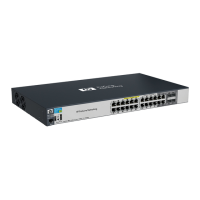
